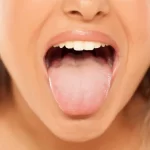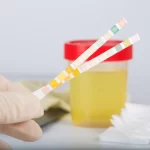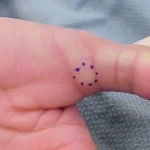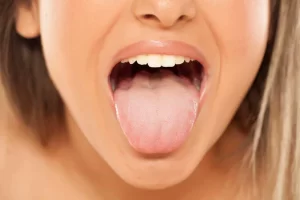Symptoms and signs of dry eye
The symptoms themselves are poor predictors of the presence and severity of dry eye syndrome. They are usually very variable between people and can vary according to the pain threshold or tolerance to discomfort from one person to another, even according to the type of personality. Some people with mild or minimal dry eye conditions may feel heavy in their eyes, while others may have significant problems due to their dry eye and do not consider it important to see an eye care professional (or they may not even experience any dry eye symptoms).
The most common dry eye symptoms, in addition to dry eyes, are:
Gritty sensation under the eyelids. Symptoms that are accentuated with the hours of the day.
Eye irritation, stinging and burning, burning and stinging sensation. It usually improves when you close your eyes.
Eye redness, more intense under the eyelids.
Discomfort and fatigue when performing daily tasks such as reading, driving, or staring at a television or computer screen.
Intolerance to contact lenses after a few hours of use.
Blurred vision may also be noticed (more due to "image quality" than "amount of vision," something similar to what is experienced when looking through dirty glass). Vision improves by blinking several times or by instilling artificial tears.
Heaviness in the eyelids.
Photophobia (hypersensitivity to light).
Teary eyes, although it seems paradoxical. When the eye "notices" that it lacks a tear, the production of the aqueous component of tears is overstimulated as a protection mechanism. What happens is that said tear has a bad mixture of components and does not completely relieve dryness.
Dry eye also causes inflammation and pain in some more severe cases (it can lead to corneal lesions resulting from advanced chronic dryness).Dry eye evaluation
Dry eye is, as the title of the post says, an underrated disease. Looking at the numbers of those affected and crossing them with the number of inhabitants with the potential risk of suffering from dry eye, it can be concluded that more than two-thirds of the population suffering from the dry eye has not yet been diagnosed. The only way to know if you have chronic dry eye syndrome is to have your ophthalmologist perform one or more dry eye tests during the eye exam.
The most common tests to evaluate dry eye are:
It is staining the ocular surface with fluorescein (a biocompatible dye that is evaluated with a blue light) for more detailed visualization of the tear and the cornea and to see the presence or absence of possible corneal ulcers.
Another test carried out with fluorescein, and a slit lamp is a measurement of the tear film breaking time in seconds called the BUT Test. (Break Up Time).
The Schirmer test is also used to evaluate the amount of tear. For this, strips of especially absorbent paper with a millimeter ruler printed on them are used. Normally, after instilling an anesthetic (avoiding the reflex tear), the test strips are placed under the lower eyelids, and the amount of tear that fills the paper is checked after a certain time (normally five minutes).There are different tests for self-evaluation of dry eye, questionnaires validated by experts and contrasted by numerous studies. The OSDI Test establishes the type of severity and classification of a dry eye according to its symptoms. Therefore, it gives us a clue of the type of dry eye that the patient has and the treatment.
Dry eye treatment
The treatment of each case will be determined by the findings found during the examination, the cause of dry eye being the one that directs the most appropriate treatment in each specific case. It is important to start treatment early to prevent eye damage.
The most important drug in the treatment of dry eye is an artificial tear. Artificial tears are lubricants that moisten and protect the ocular surface during blinking. There are many types, but those that contain sodium hyaluronate are the most effective in most cases since they stabilize the tear film, protect and stimulate corneal cells and have an anti-inflammatory effect. If it is necessary to put artificial tears on more than 4 times a day, they mustn’t have preservatives.
In many cases, using preservative-free artificial tears every time you notice dry eyes in the form of eye drops and following a few small tips (which we will talk about at the end of the post) can significantly reduce symptoms.
The artificial tear has components that try to emulate the human tear artificially. In its composition, there is water in a saline solution designed to maintain the pH of the tear and not alter its metabolism. It has components such as hyaluronic acid that help lengthen the permanence of artificial tears on the ocular surface.
In other cases in which the artificial tear is not enough, more specific treatments are necessary:
In mild dry eye syndrome, it is important to clean the eyelids often with special eyelid hygiene wipes.
In moderate cases, the frequency of artificial tear renewal is increased, or a higher density artificial tear is chosen, or in the form of a lubricating gel, to apply before going to sleep.
If this is not enough, consider closing the tear points with special plugs to keep the tear in the eye longer.
Cyclosporine 0.05% is a very effective immunosuppressive drug in patients with moderate chronic dry eye syndrome and decreased tears, especially with some ocular inflammation.
In cases of severe dry eye syndrome, additional more specific treatments are necessary: autologous serum eye drops (a medicine made with the patient's blood), permanent occlusion of the tear points, use of special contact lenses, special masks in wet chamber form, or even surgery, for example, lateral tarsorrhaphy, which consists of cutting and sewing the eyelids to reduce the palpebral fissure and better protect the cornea.
In cases where autoimmune diseases coexist (such as Sjögren's syndrome, rheumatoid arthritis, lupus), action is taken with an internist or rheumatologist. If the underlying disease is of another type, the appropriate professional will monitor the patient (for example, diabetes or the endocrine thyroid).Dry eye disease (DED) is multifactorial, complex, and chronic that affects the ocular surface and causes discomfort, visual problems, and, in some cases, lesions in the cornea and conjunctiva. Therefore, even though its name may be misleading, it consists of much more than simply “not having a tear.”
It is a chronic syndrome, which affects about 30% of the population, and requires personalized diagnosis and treatment. There are several causes and types of dry eye, depending on which the degree of severity and the therapeutic strategy vary to obtain the best results in each patient.
Generally, dry eye is caused by a tear deficit (low production or excessive evaporation) or because it is of poor quality due to problems such as dysfunction of the meibomian glands (lack or alteration of the lipids that make up the tear) or blepharitis (inflammation of the eyelid). In addition, it is usually associated with different degrees of inflammation.
Main causes of dry eye
The causes that provoke it are very diverse and can occur in isolation or several converge. The main risk factors for dry eye include the following:
Hormonal (adolescence / menopause)
Advanced age
Wearing contact lenses
Use of antidepressant and antihistamine drugs (for allergies)
Treatment with chemotherapy or radiation therapy
Having undergone eye surgery
Environmental factors (air conditioning, heating, dry or highly polluted environments ...)
Diet (vitamin deficiency)
Autoimmune diseases (rheumatoid arthritis, Sjögren's syndrome, fibromyalgia ...)
















Add Comment